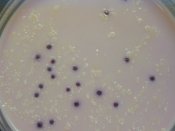
Water quality testing is important for new drinking water wells in addition to periodic evaluation of existing wells. Water quality testing is fundamental in helping to protect drinking water supplies to ensure safety and quality. Water quality testing is done as a precaution to warn customers when bacteria levels are high.
Bacteria may be introduced into a water supply well when installing equipment in the well, including water level monitoring devices. Contaminants may infiltrate your well from the soil or from the air. Common bacterial contaminants include E. coli and total coliforms.
Total Aerobic Bacteria
Testing water quality on a regular basis is recommended for maintaining a safe and reliable source. Water quality testing allows potential contamination to be detected early enough. Common water contaminants include coliform and E.coli bacteria. Both well water and waste water can be tested for microbial contaminants.
Methods Of Water Quality Testing
Water quality testing should follow use standard methods such as those of ASTM or methods recommended by US FDA or Health Canada.
Below are common microbial tests for water:
|
|
Coliform Analysis

Coliforms are tested for as indicators of sewage contamination. They can be tested for in water samples, swab samples, and air samples. Water samples (if the water comes from a chlorinated system) must be treated with sodium thiosulfate. Swab samples are collected using liquid culture swabs to preserve the sampled bacteria. A basic test involves testing for presence/absence of coliforms with or without enumeration. A more detailed test involves identification of the coliforms to genus or species with or without enumeration. For sampling information, please contact usso that we can discuss the needs of your unique situation.
Iron Bacteria
Iron bacteria are seen as nuisances, and are particularly common in systems using wells as a water source. They produce thick slime layers, which can cause blockage in a plumbing system. Iron bacteria can also discolour water or cause unpleasant odors. Testing for iron bacteria involves determing the level of contamination per milliliter of water. Results are reported as number of colony forming units per milliliter (CFU/ml) of water.
Sulfur Bacteria
Sulfur bacteria act in a similar fashion to iron bacteria and are also commonly found in well-water systems. They also produce thick slime, usually coloured black. The odors produced by sulfur bacteria can be described as ‘rotten eggs’. Testing results for sulfur bacteria are reported as number of colony forming units per milliliter (CFU/ml) of water.
Legionella (Causative agent of Legionnaires’
Disease)
The basic test for Legionella is presence/absence. Identification of species of Legionella is also provided if requested. Detailed information is available on the Legionella Analysis Page.
Other Bacteriological Services
Other bacteria tests include:
- Bacteria Enumeration: Many samples can be analysed to determine the total number of colony forming units (cfus) per unit (either volume, area or weight).
- Gram Staining: We can stain and categorize bacterial cultures as Gram-positive or Gram-negative, and provide colony and cell morphology information.